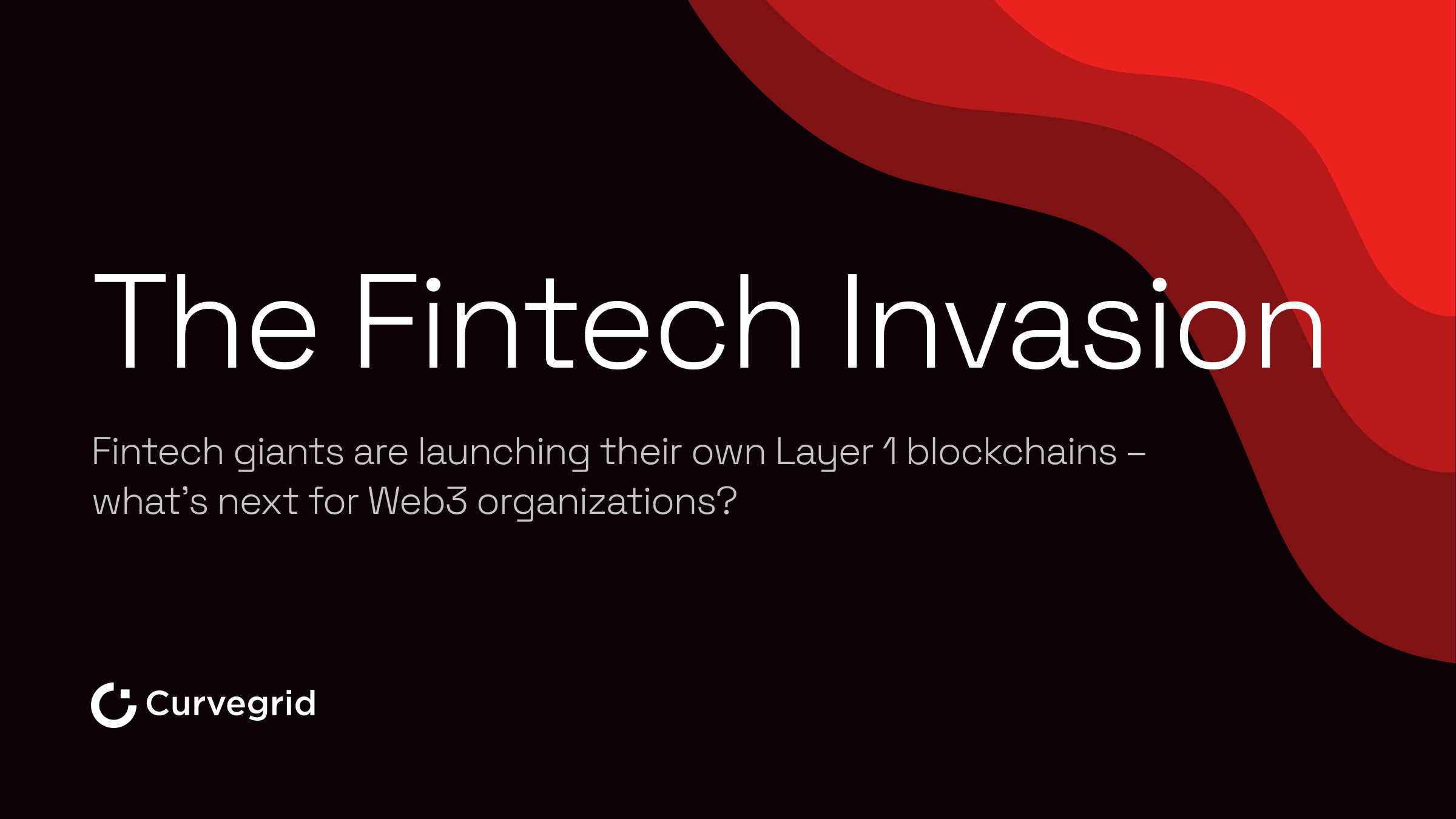Singapore in mid-September is vibrant, bustling, and uniquely suited for events on the cutting edge of technology, finance, and even Formula 1. I was there for a week, immersed in the business and blockchain events of the Milken Institute Summit, Token2049, and ETHGlobal Singapore. While work was the focus, the experience of Singapore as a green, walkable city added its own charm, especially during the F1 weekend when road closures made public transport and walking the best ways to get around.

A Week of Blockchain Insights
Curvegrid’s focus is blockchain infrastructure. At events like this our goal is to connect with customers, partners, and vendors, while also keeping an eye on industry trends. There were close to 1000 side events, and even with two of us on the ground, we only scratched the surface. The real value? The people. In-person conversations were the highlight—getting a real-time sense of where the industry is today, and where it’s heading next. There’s the adage of "business speed" vs. "startup speed" vs. "web3 speed", each an order of magnitude faster. This week was a reminder that the web3 world continues to evolve at lightning pace.

Conferences provide two types of signals: explicit ones from the main talks and presentations, and implicit ones that emerge from deeper, off-the-record conversations. Given that many events are planned months in advance, the official agenda is often lagging 2-6 months behind the state of the art. Reading between the lines becomes essential. A more immediate signal came from ETHGlobal Singapore, a hackathon where hundreds of participants created new projects with cutting-edge web3 technologies. I had the privilege of judging the hackathon, gaining firsthand insight into where the innovation is happening right now.

Industry Trends
During the week, several key trends emerged:
- Web3 & AI: Further Off Than We Think
While the vision of autonomous agents transacting on decentralized networks is clear, the present focus remains on using AI to get ahead in crypto markets, but it doesn’t feel like there is much new here compared to traditional financial markets. Despite the buzz, VCs seem less enthusiastic about investing in AI-specific web3 niches for now. - Blockchain Games: The Sleeping Giant
The gaming industry dwarfs both the movie and music industries combined, with tens of billions of dollars spent on in-game assets every year. These purchases, made with credit cards, are locked away in centralized databases—destined to vanish when games are inevitably sunset by their creators. The entire value chain is ripe for decentralization, offering players true ownership of their assets. But big studios remain fiercely protective of their cash cows, and users remain skeptical of the blockchain gaming experience. Still, this sleeping giant could wake up fast, and when it does, it’s going to be a game-changer. - Real World Assets (RWAs): A Rising Star
RWAs—representing physical assets like real estate, art, and commodities on the blockchain—are gaining traction. It’s always seemed that the bigger challenge for RWAs is not the web3 implementation, but in getting over the hurdle of changing existing processes and regulations in the respective areas. Real estate and energy seem to be furthest ahead, and I think we could see significant progress in the next year. - TradFi’s Web3 Moment
Traditional finance (TradFi) is on the verge of a major web3 embrace. In Japan, where Curvegrid is based, stablecoin laws have just been passed and it has been reported that a major crypto asset law change is coming. In the US, the presidential candidates are both vying in their own ways to embrace crypto. Decentralized finance (DeFi) and RWAs will likely be the catalysts, leading to a new financial landscape that blends traditional and decentralized finance. - Decentralized Physical Infrastructure Networks (DePIN): Still Searching for a Fit
DePIN, which crowdsources physical IT infrastructure, has come to the foreground again. In years past, this was about renting crowd-sourced data storage and mobile connectivity, but now it’s all about GPUs for AI. However, the value proposition remains unclear, especially when comparing it to just purchasing GPU hardware outright. - Zero Knowledge (ZK) Privacy: The Next Frontier, But Not Quite Yet
At ETHGlobal Singapore, Zero Knowledge (ZK) technology was the talk of the town, with a substantial number of hackers diving deep into it. ZK promises private transactions—crucial for commerce—along with scaling solutions for L2s. But here's the catch: while the potential is massive, the tech isn't there yet. Generating meaningful proofs for even moderately complex use cases can still take tens of minutes. It’s like we’re sitting on the verge of a privacy revolution, but waiting for the software and hardware to catch up. When they do, ZK is poised to completely transform the blockchain space. - L1s and L2s: A Crowded Landscape
Layer 1 (L1) and Layer 2 (L2) blockchains continue to proliferate. At Curvegrid we’re tracking at least 350 of them. Three main L1s remain as dominant players: Bitcoin, Ethereum, and Solana. On the L2 side, most are centered around the Ethereum Virtual Machine (EVM) ecosystem, with several L2s pivoting or relaunching to become EVM-compatible. The primary EVM L2 ecosystems include Optimism Superchain (OP Stack), Arbitrum, and Polygon zkEVM/CDK. While it's clear that some of these will play a key role in the future of blockchain, it remains uncertain which—or how many—will thrive versus survive over the next 1-2 years.
Looking Ahead

All in all, the week in Singapore was a success—both personally and professionally. From in-depth conversations to judging innovative projects at ETHGlobal, the energy was palpable. The blockchain space continues to evolve, and I look forward to seeing how these trends play out in the coming months.



.png)